How to get good at Creative Coding?
- What is the Process like?
- How should we think about code?
- What makes an interesting artwork?
There are multiple ways to approach creative coding and to build a personal practice - there isn't really one "correct" way to do it.
The Process
We also wanted to share a way of working with code where things are figured out during the process of writing the software. We called this sketching with code.
– Casey Reas
Approaches to Creative Coding
1
2
3
- Making the Art vs. Finding the Art
- Looking for one Art but finding another Art
- Architects vs. Gardeners
1. Making the Art vs. finding the Art

- Not a linear process
- You find ideas rather than realizing them
- Great article by Amy Goodchild on this topic:
I feel like I am a wildlife photographer trying to capture the best moments of some wild thing that keeps changing / evolving (that I created)
– Zach Lieberman
- It doesn't matter what you write, but that you write. Basically practicing your craft.
- Also called "Writing without thinking"
Similar to Creative Writing
Finding it - Discovery and experimentation is one of the most fulfilling parts of generative work.
– Chris Reid - Generative Collective
- It will frequently happen that your result is different from what you ultimately achieve.
- Expectation vs. Reality
2. Looking for one art but finding another art
Expectations and reality rarely line up, but I always enjoy the surprises between the two. Definitely feels like discovery/finding.
– Chris Lesage
We don't make mistakes, we make happy accidents.
– Bob Ross
Examples of Happy Accidents
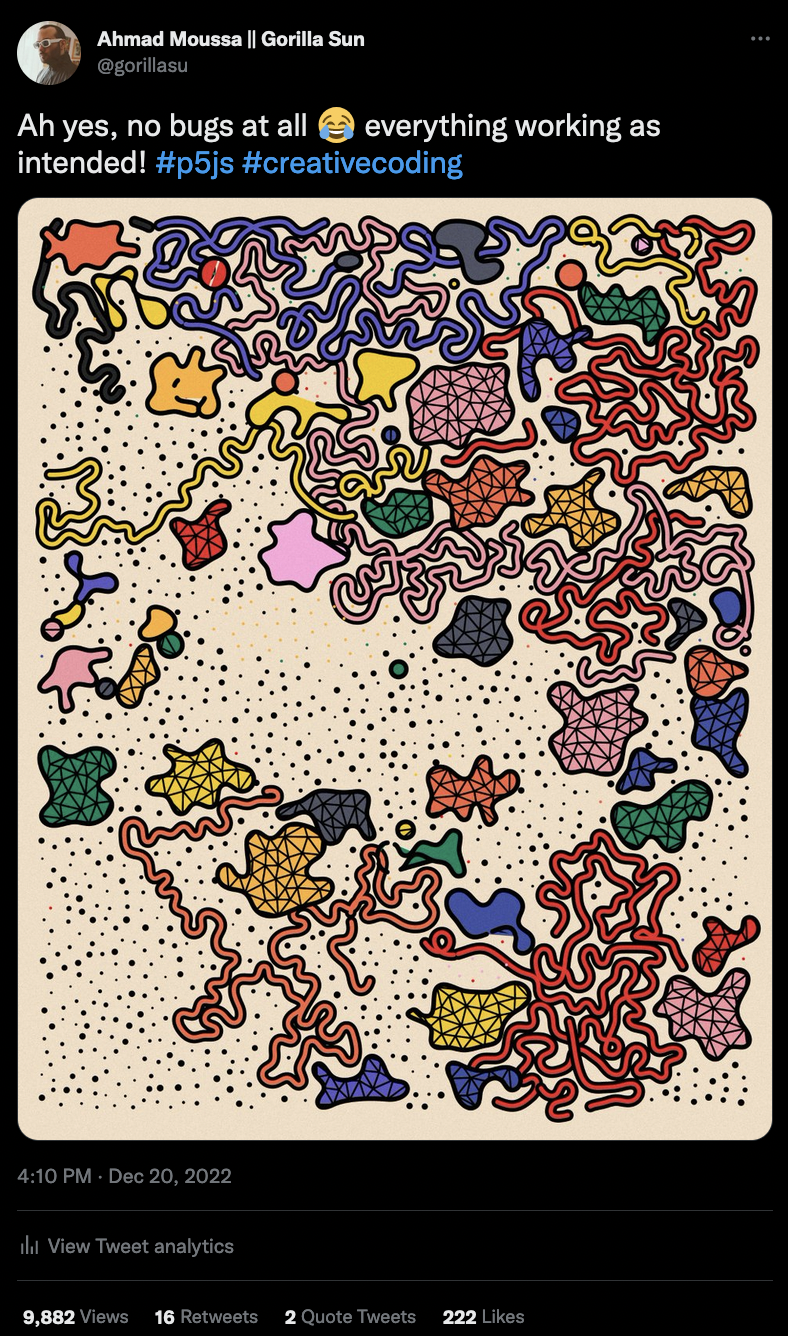
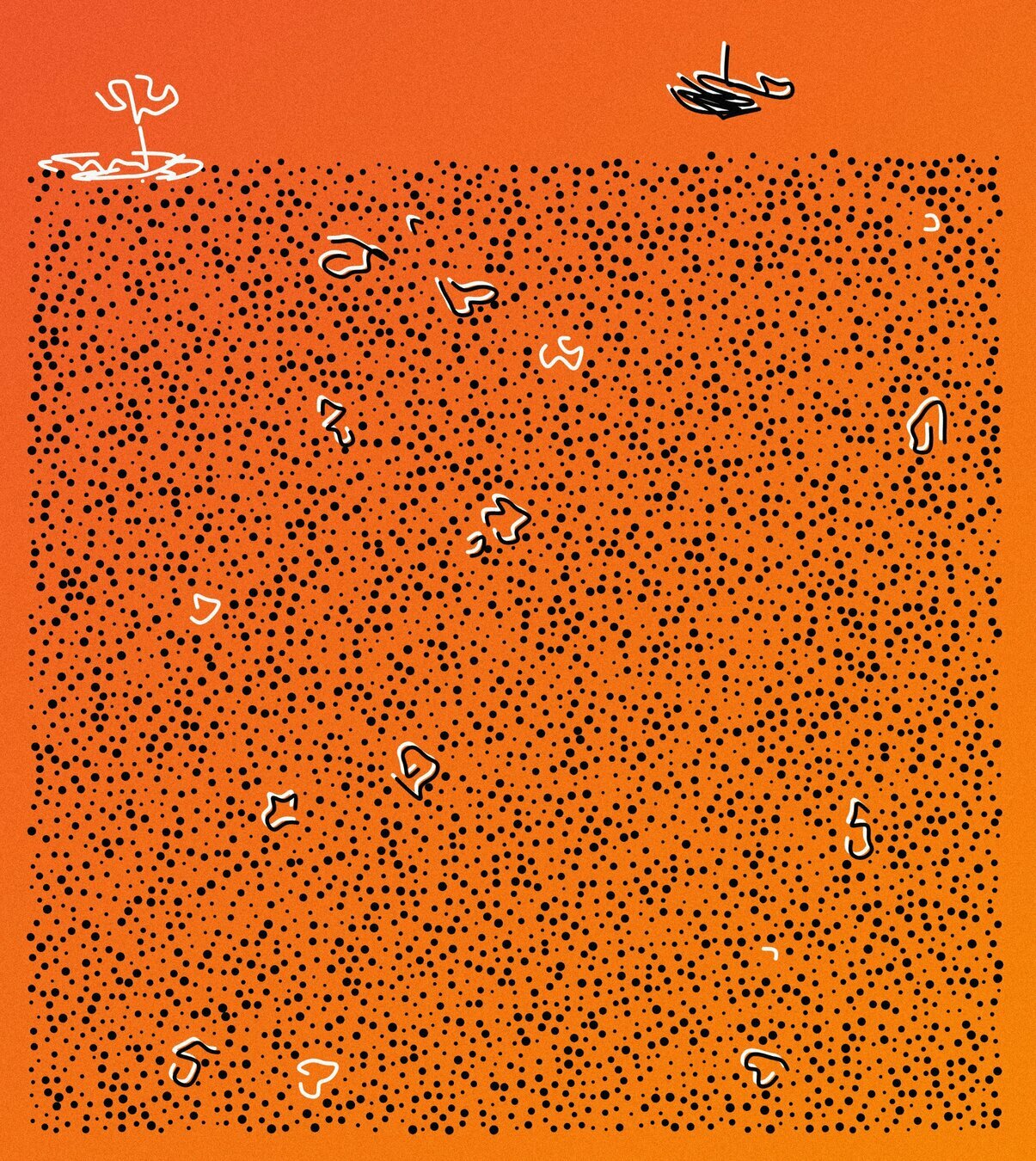
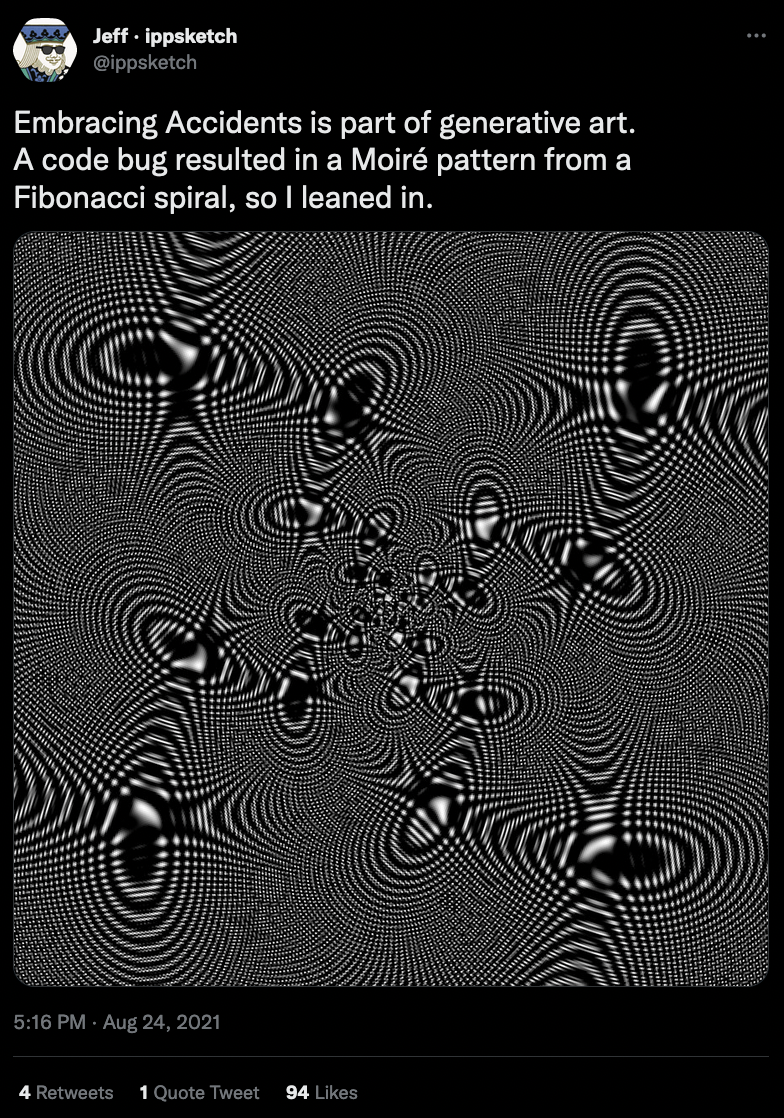
Architects vs. Gardeners
- Two different art rhythms
- Bigger projects that take a long time vs. multiple small projects at the same time
Architects vs. Gardeners
"I think there are two types of writers, the architects and the gardeners.
The architects plan everything ahead of time, like an architect building a house. [...]. They have the whole thing designed and blueprinted out before they even nail the first board up.
The gardeners dig a hole, drop in a seed and water it. They kind of know what seed it is [...]. But as the plant comes up and they water it, they don't know how many branches it's going to have, they find out as it grows. And I'm much more a gardener than an architect."
- George R. R. Martin
Architects vs. Gardeners
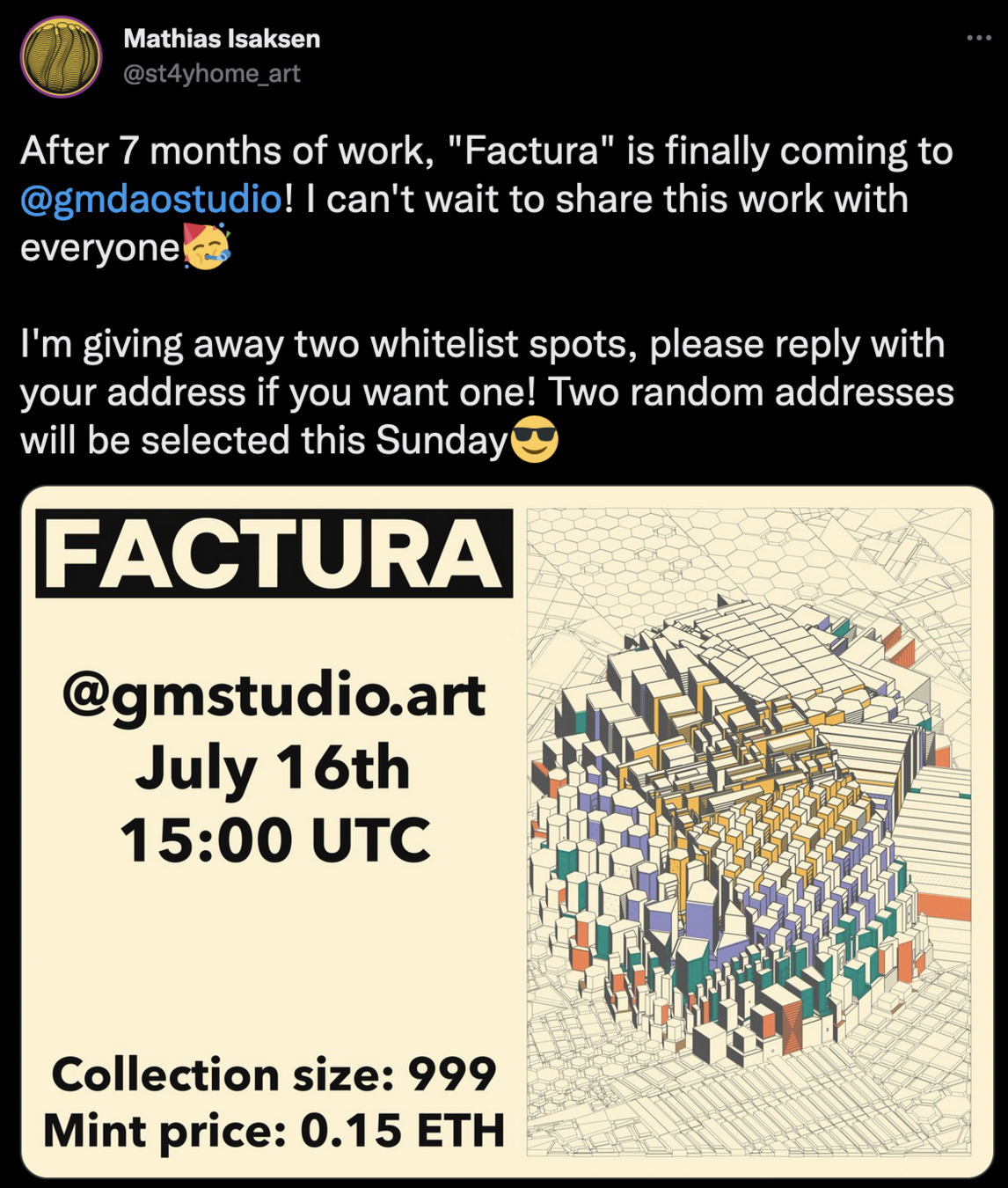
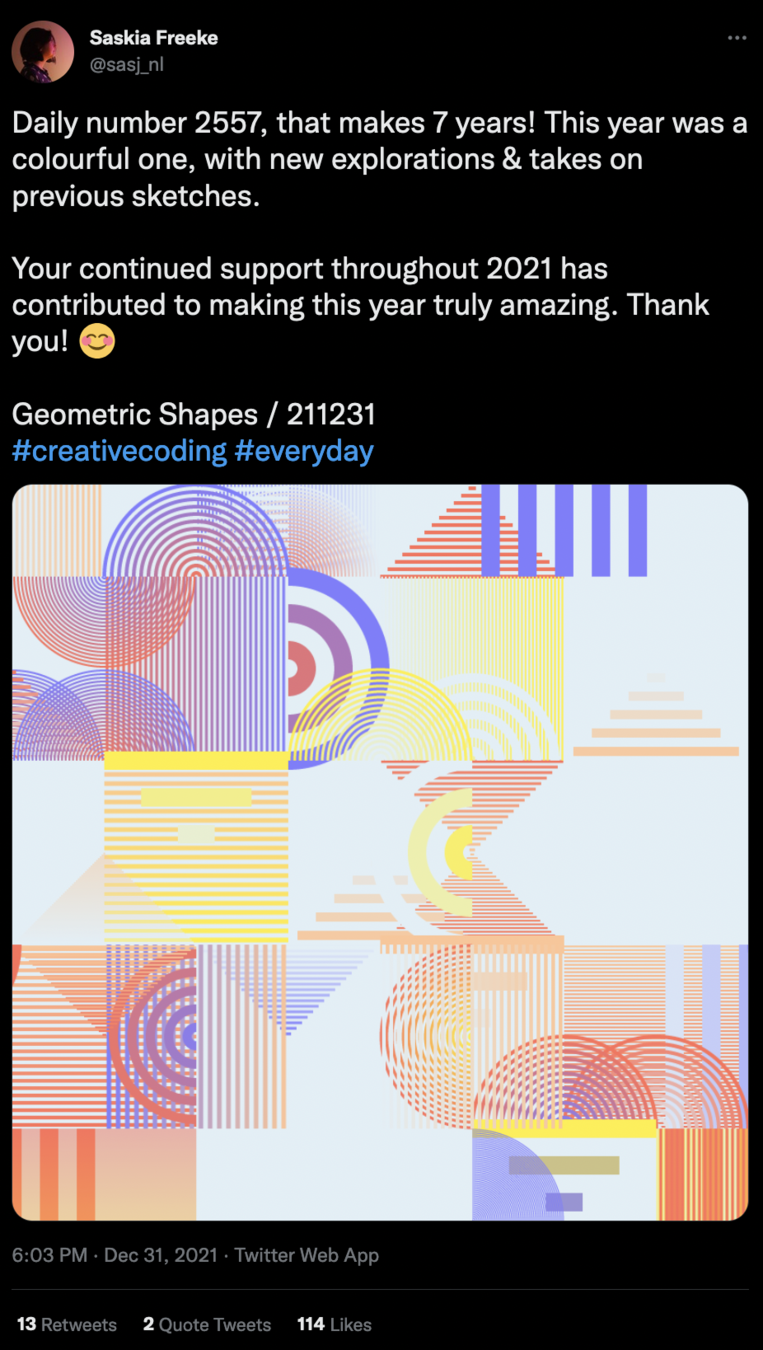
From Idea to Code
- Divide & Conquer is a way of thinking
- Split larger problems into smaller tasks.
- Solve the small tasks then combine their solutions.
Divide & Conquer
What kind of algorithm can we use to calculate the intersection/collision between two rectangles?
Rectangle Intersections/Collisions Example
- We can represent rectangles as a collection of four lines/edges
- Calculating the point of intersection between two lines is straightforward.
Dividing the task into subproblems
If we solve these two problems we find a solution for the larger problem.
The Result

- Complex systems can emerge from the composition of smaller individual rules.
- These systems are more than the sum of their elements.
- Complexity emerges from simplicity.
Emergence
Emergence in Nature
Kurzgesagt - How our universe is an emergent system.
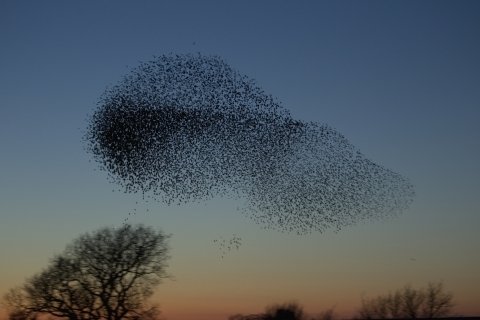
Flocks of Birds
Amy Goodchild also has a great article on this topic:
Emergence in Generative Art

Conway's Game of Life 1/3

Conway's Game of Life 2/3
Four Rules:
1. Eine Zelle mit genau 3 Nachbarn wird lebendig.
2. Eine Zelle mit weniger als 2 Nachbarn stirbt.
3. Eine Zelle mit 2 oder 3 Nachbarn bleibt am Leben.
4. Eine Zelle mit mehr als 3 Nachbarn stirbt.

Conway's Game of Life 3/3
Art vs. Code
Programming: Difficult!
Art: ... also Difficult!
- Everyone can learn how to program
- Creativity is different however
- Making art is an emotional challenge
- How do you find new ideas?
Art Problems vs. Code Problems
Tyler Hobbs: Looking back on 5 years of making generative art
What I've been surprised to find is that "ideas" aren't really important. What is important is putting in time at the studio (or at the desk in your bedroom). When I physically make myself sit down and do something, new work comes out. I can even start with a premise like "this will be garbage, and I'm okay with that". After two or three rounds of garbage, something neat from the spirit realm happens to appear on my paper or screen and then I know what to work on.
Malcolm Gladwell's 10000 Hour Rule
To become an expert in a field it takes 10000 hours. Gladwell's Theory.
Ten thousand hours is the magic number of greatness.
- Malcolm Gladwell
- There is no "perfekt" artwork
- Instead of trying to perfect things, or trying to create the perfect artwork, it's better to work on your skills and to put in the effort
- Making more works increases the chance of finding an interesting idea.
Quality from Quantity
– Art & Fear
[A] ceramics teacher announced on opening day that he was dividing the class into two groups. All those on the left side of the studio, he said, would be graded solely on the quantity of work they produced, all those on the right solely on its quality. His procedure was simple: on the final day of class he would bring in his bathroom scales and weigh the work of the “quantity” group: fifty pound of pots rated an “A”, forty pounds a “B”, and so on. Those being graded on “quality”, however, needed to produce only one pot — albeit a perfect one — to get an “A”. Well, came grading time and a curious fact emerged: the works of highest quality were all produced by the group being graded for quantity. It seems that while the “quantity” group was busily churning out piles of work – and learning from their mistakes — the “quality” group had sat theorizing about perfection, and in the end had little more to show for their efforts than grandiose theories and a pile of dead clay.
Key Points
- New ideas come with time "Trust the process"
- Practice makes better, not perfect. Spend time on the things you want to get better at.
- Important is to complete works, even if not perfect.
Challenges:
- Genuary
- Weekly Birbsnest Creative Coding Challenge
An interesting artwork:
- Is a first of its kind and is surprising
- Has a strong concept
- Works on multiple levels
- Tells a Story
- Is technically impressive
What makes an interesting artwork?
Tyler Hobb's Fidenza

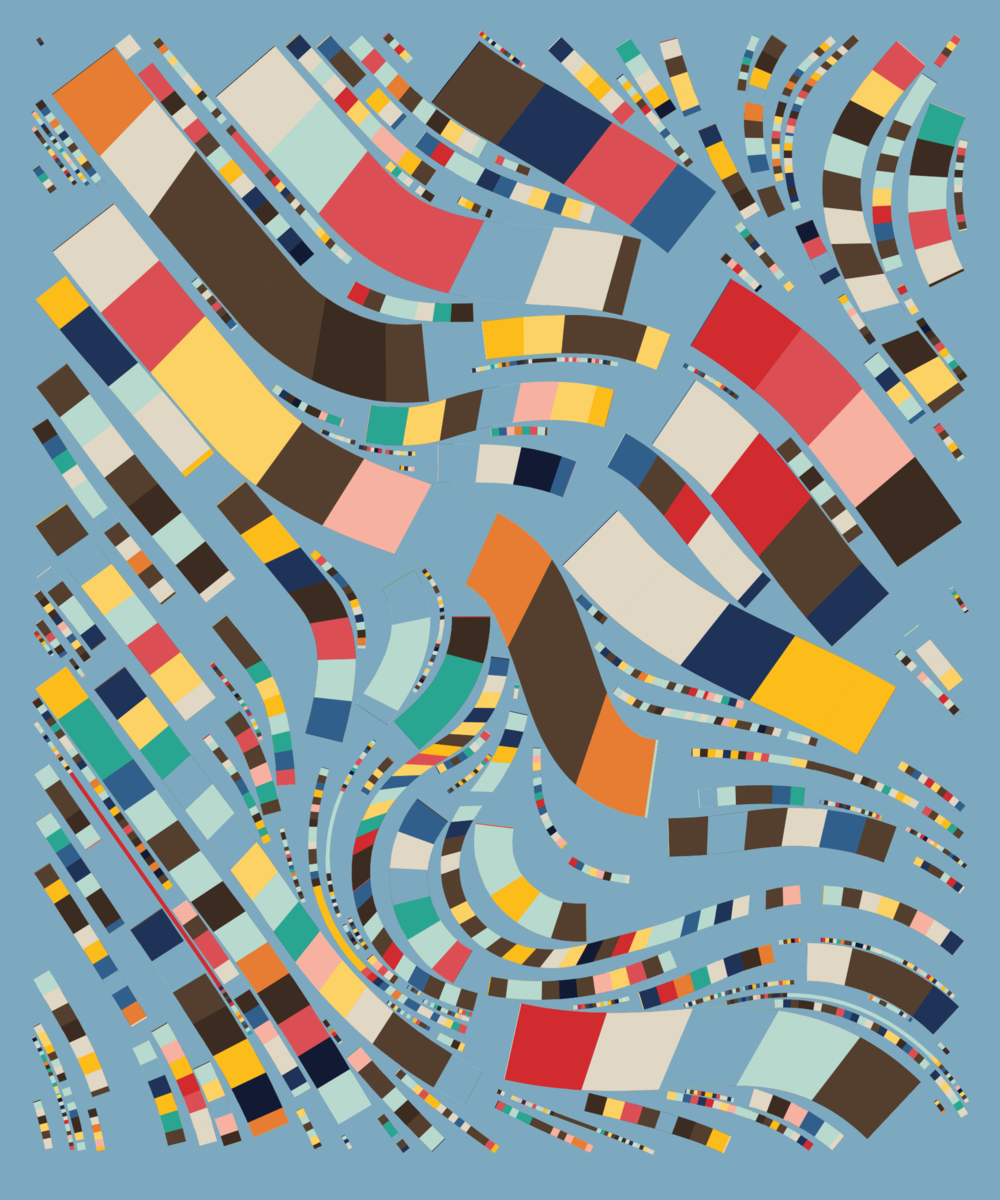
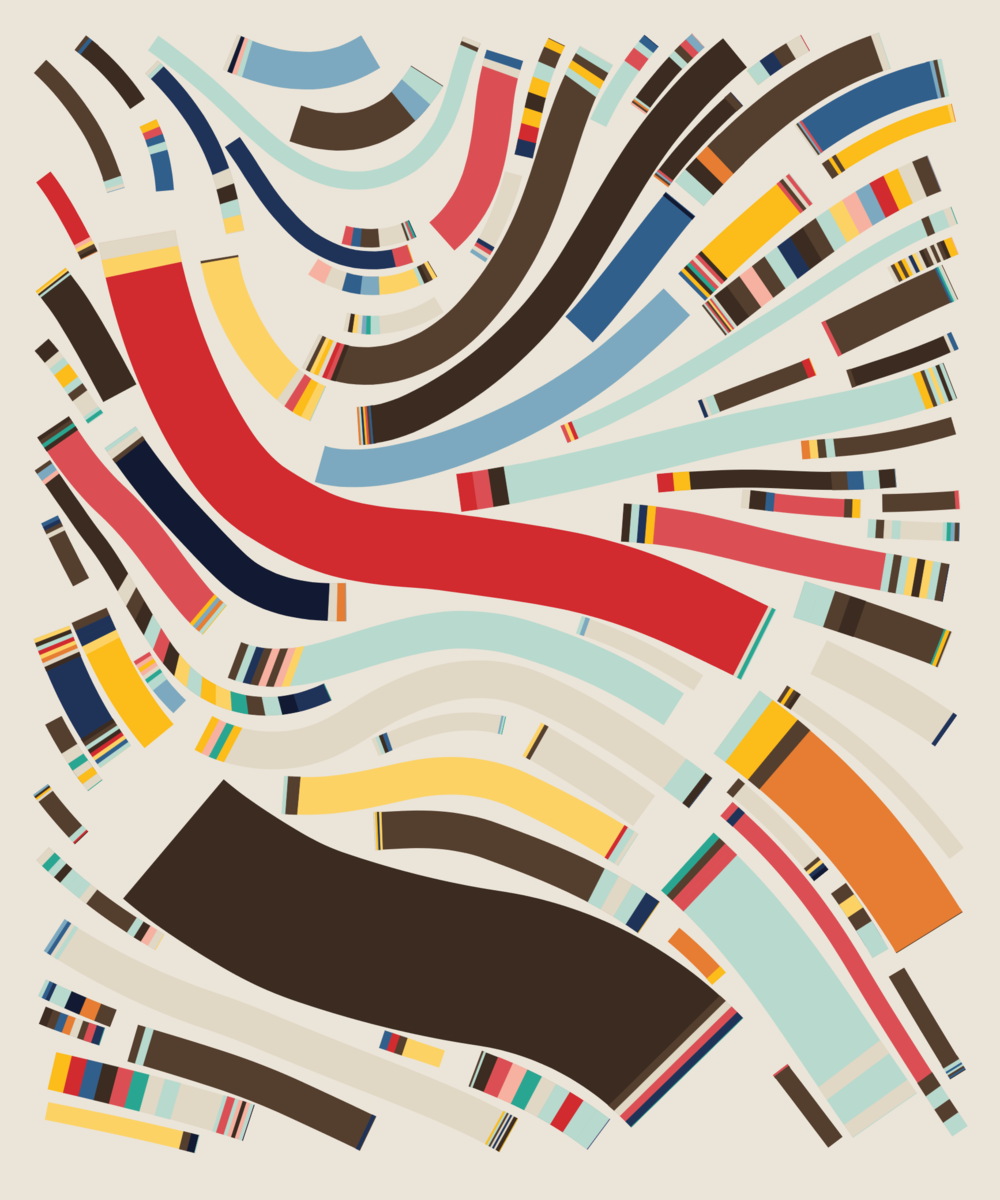
Tyler Hobbs Fidenza wurde als generatives Token auf der Artblocks-Plattform veröffentlicht und ist wohl das Pionierwerk des "long form generative art".
ippsketch's Bent

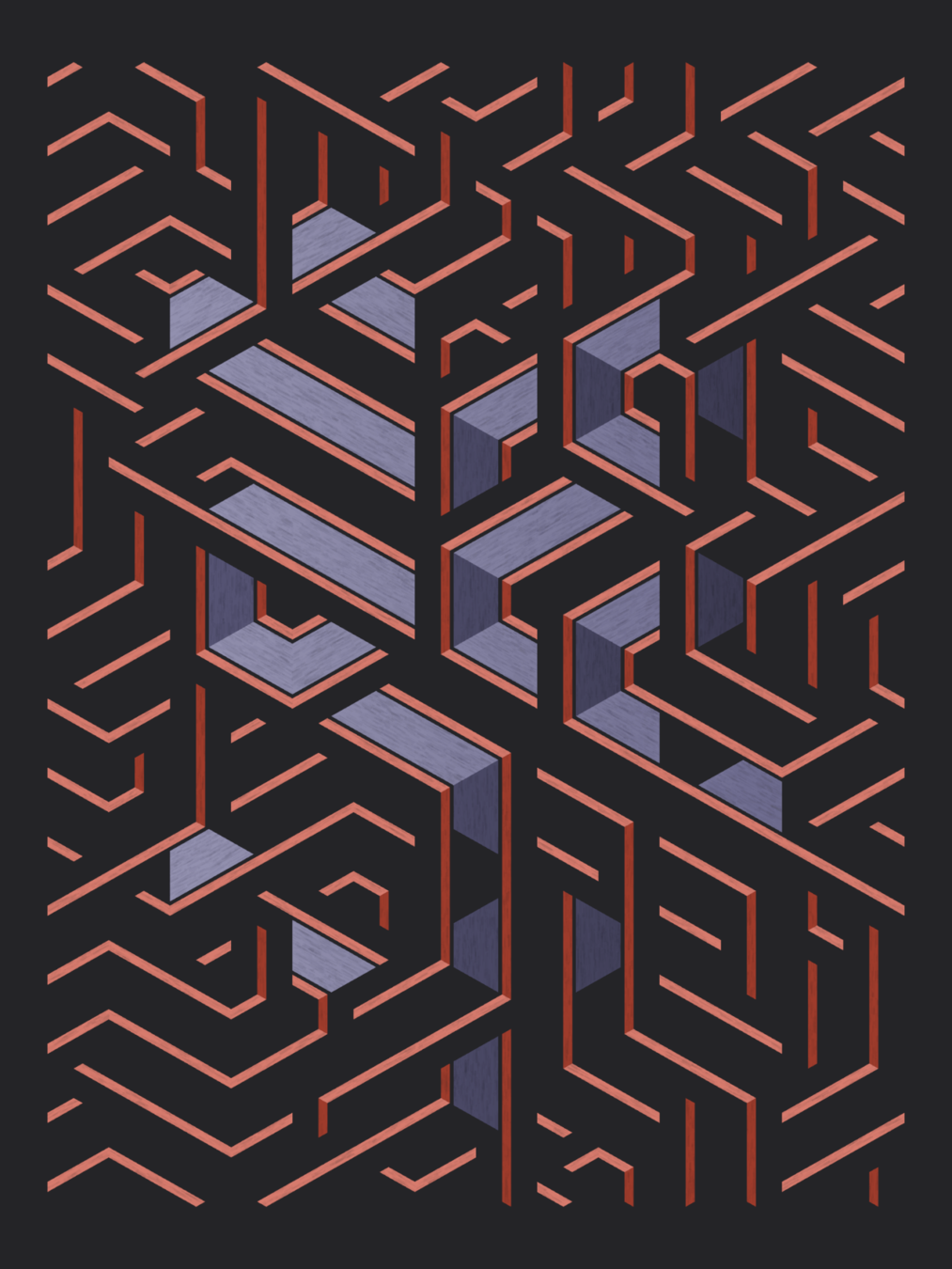
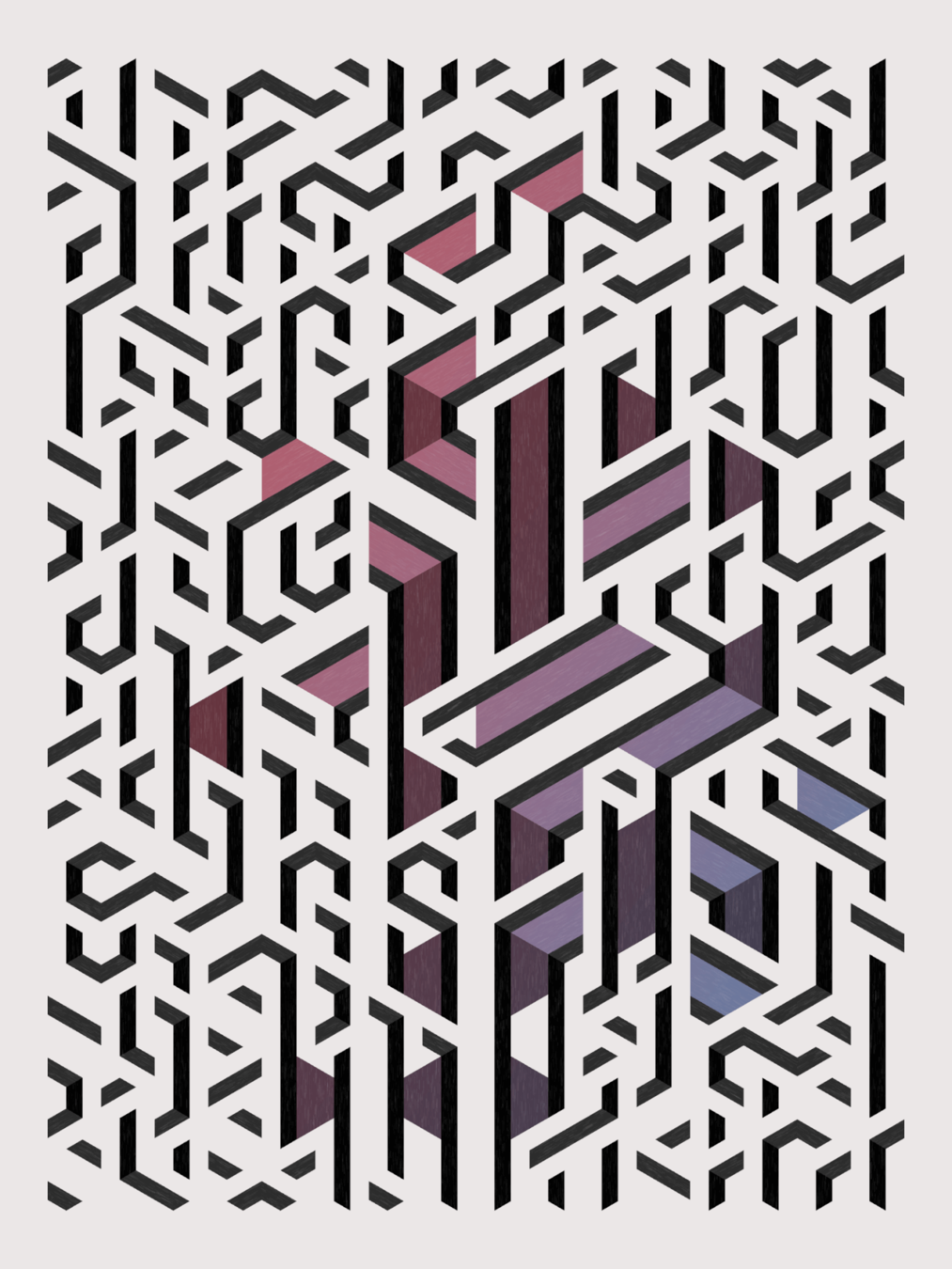
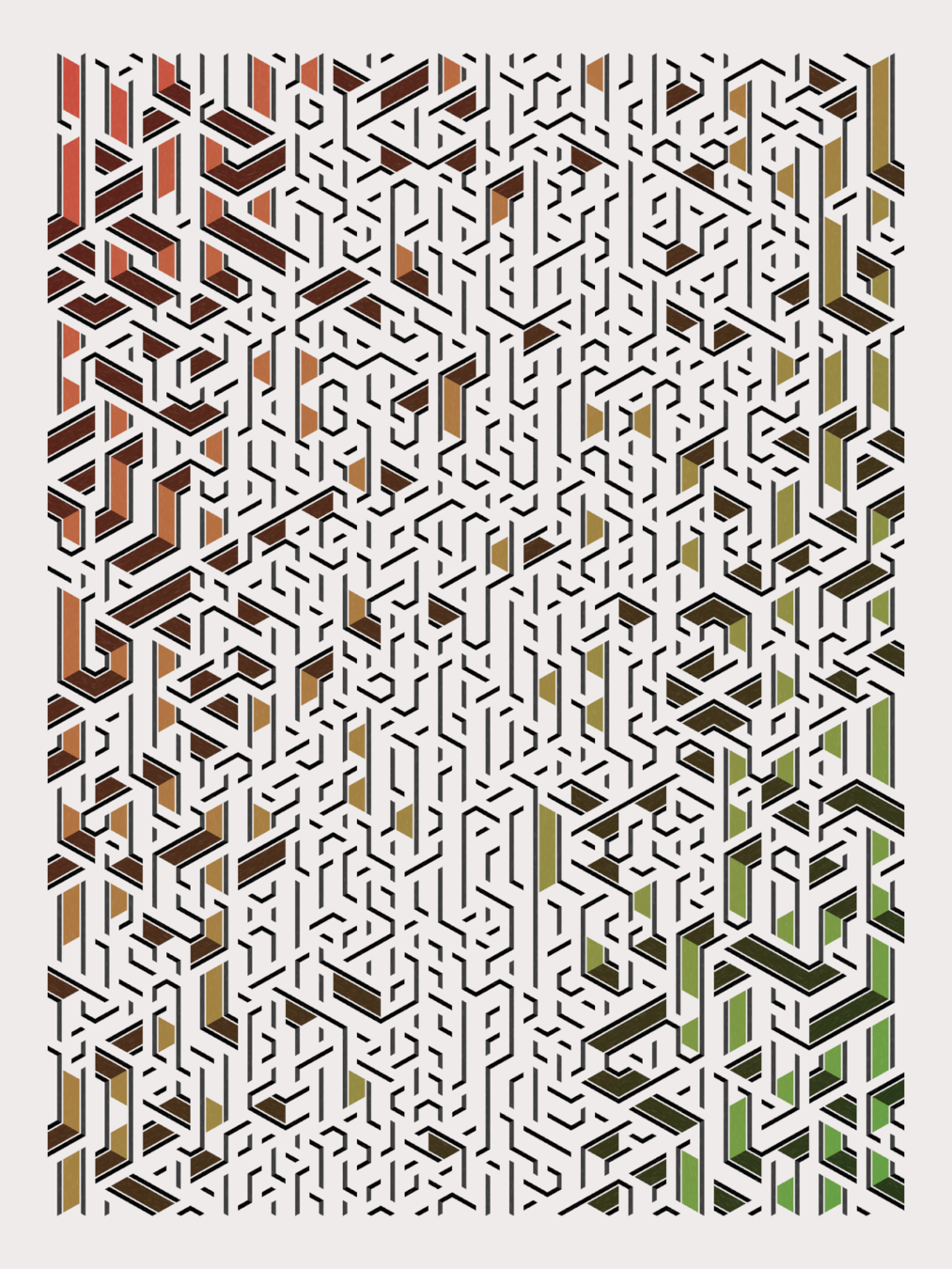
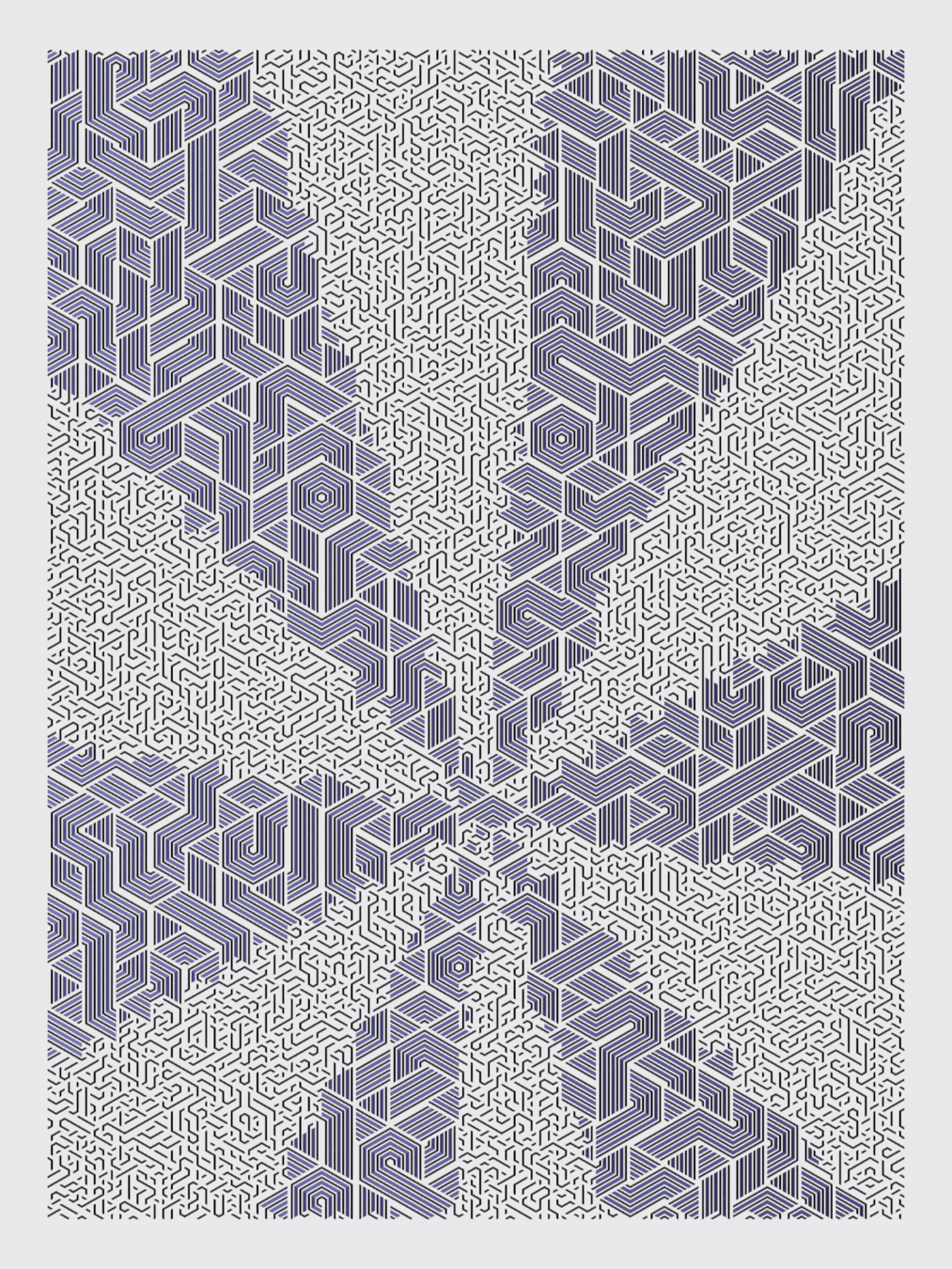
Beesandbombs
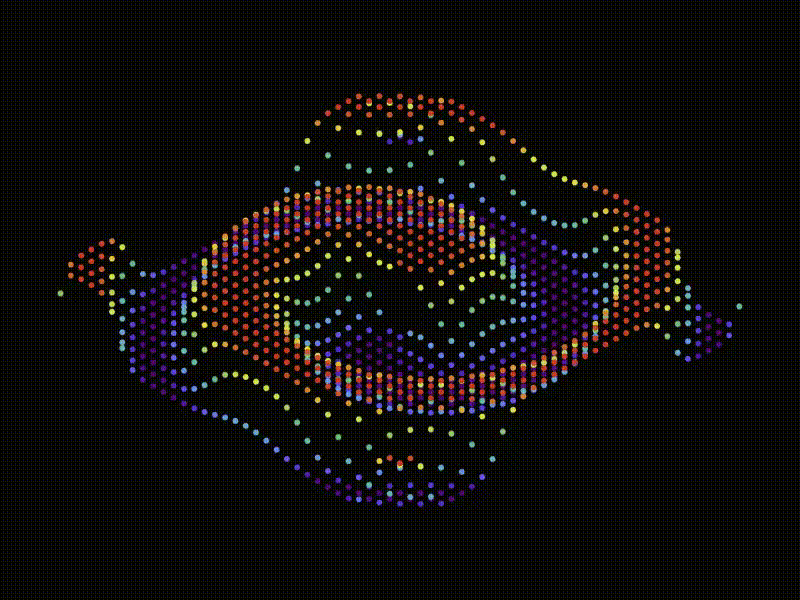
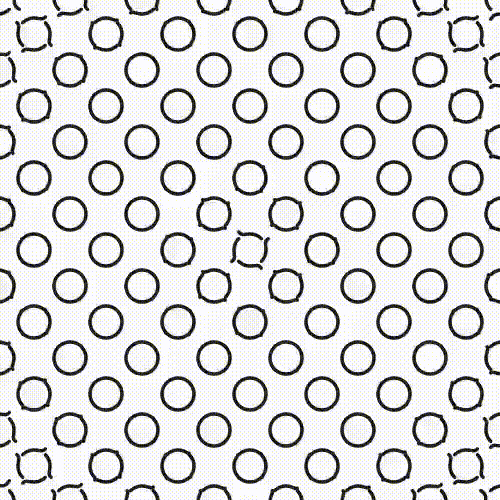
Dave aka @beesandbombs ist ein Meister der Animation und optischen Illusionen. Outro sequence von "Queens Gambit" gemacht!
Technically Impressive
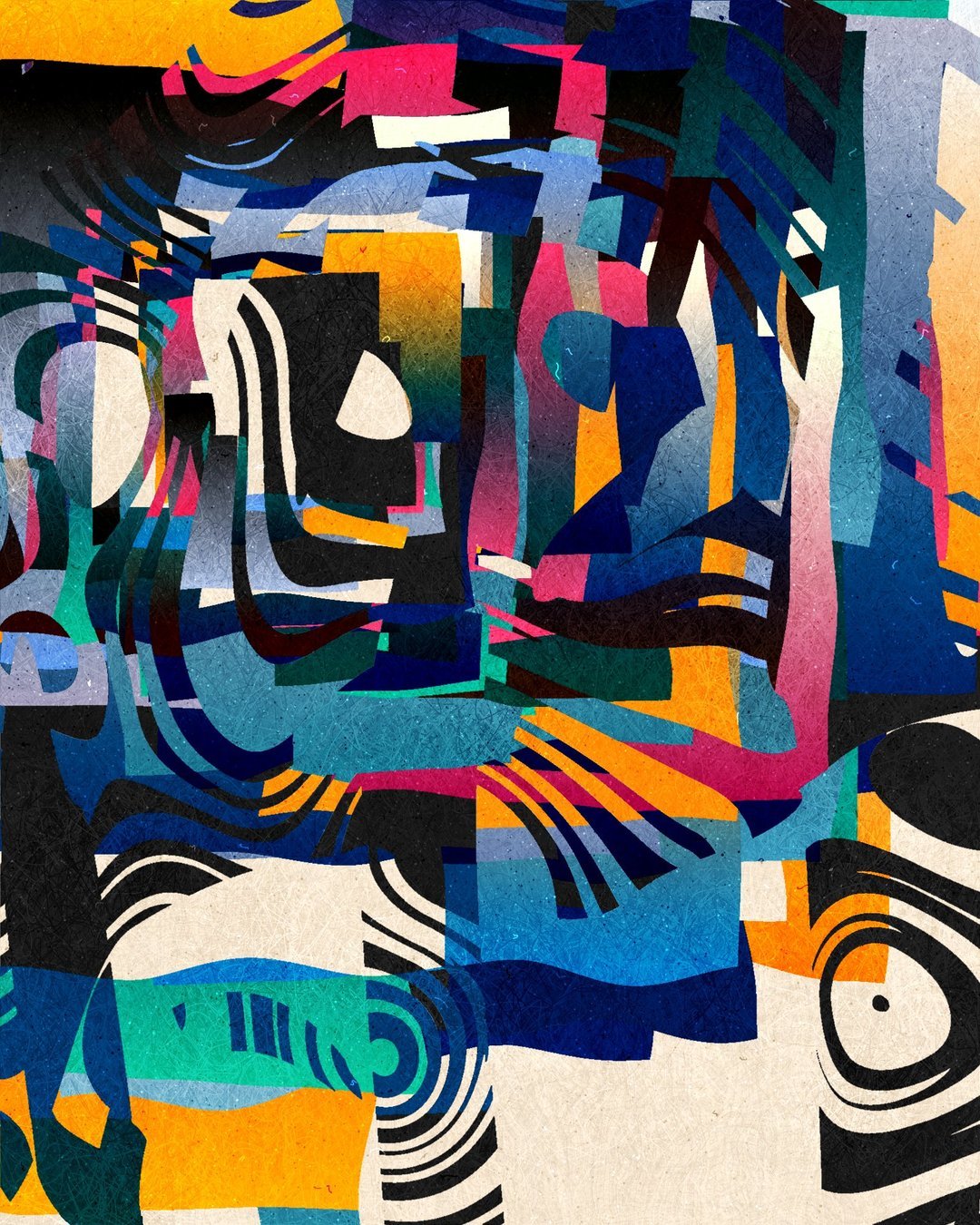
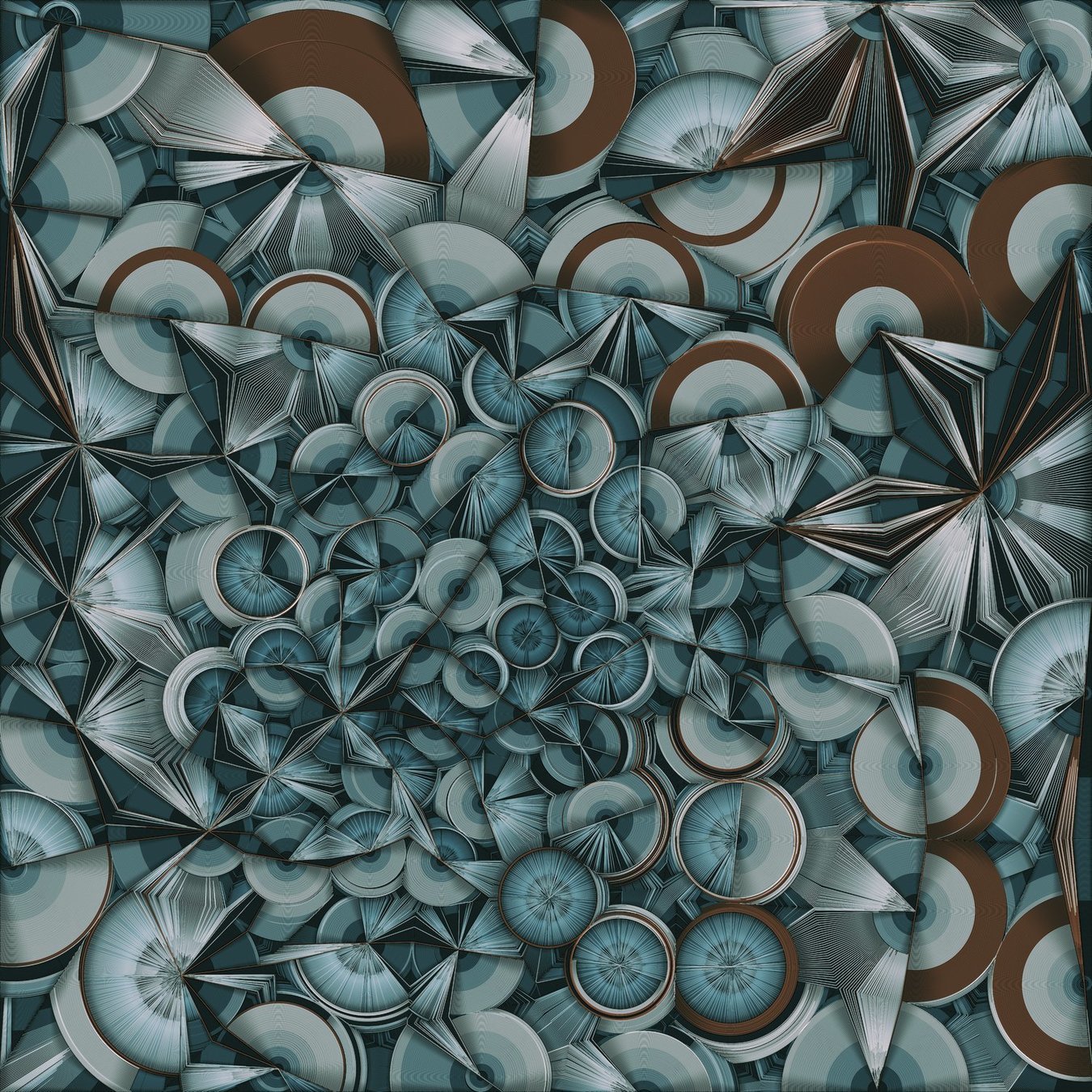
Generative Artwork by Melissa Wiederrecht
Generative Artwork by Jeff Palmer
Important to measure how much progress you have made, and for others to learn from your work.
Document Everything!
Vera Molnar: "Work a lot. Don't throw anything away."
"You have to work a lot and not throw anything away. I worked a lot I threw away a lot, and that I regret. But I love to tear up so much."
- Vera Molnar
Serif
By Ahmad MOUSSA
Serif
- 413



